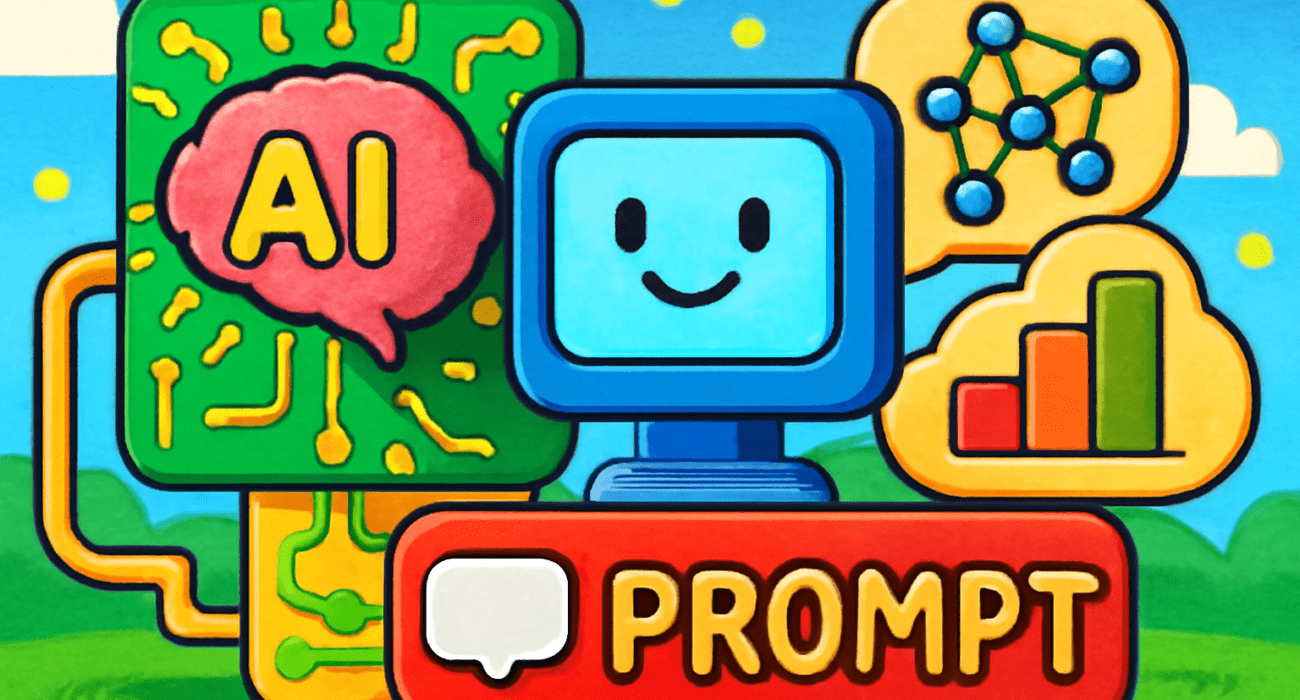🧠 The Revolution of Using Prompts: Why They Are Key to Getting Precisely Generated AI Responses
In the world of artificial intelligence (AI), prompts play an essential role in the quality of the responses we get. Every time we interact with an AI model, like ChatGPT, the prompt is what tells the machine what to do and how to do it. But why does a good prompt make the difference between a helpful response and an inaccurate one?
The proper use of prompts allows the AI to understand exactly what you need, generating responses that are more precise and aligned with your expectations. If not formulated correctly, the results could be vague, irrelevant, or simply wrong. Here we explore why prompts are so essential and how they can enhance your interaction with AI.
🛠️ AI Tools: How to Create Effective Prompts to Get Useful Responses
Generative AI has revolutionized how we interact with technology. From text generation to image creation, AI models allow users to get accurate content with just the right instructions. However, the magic happens when the prompt is designed correctly.
For example, a prompt like “Write an article about AI” is vague and could generate imprecise results. In contrast, an effective prompt like “Write a 500-word article about the history of artificial intelligence, highlighting its key milestones and how it has impacted everyday life” allows the AI to deliver a more detailed and focused response.
This level of precision is possible thanks to well-structured prompts that guide the AI to generate relevant and useful content.
📈 Impact of Prompts on AI Efficiency
A good prompt not only improves the quality of the response but also enhances the efficiency of AI. The clearer and more specific the prompt, the more accurate the generated response will be.
For example, in digital marketing, well-crafted prompts can help generate SEO-optimized content, create attractive product descriptions, and much more. In education, a good prompt can help generate detailed explanations, summaries, and even interactive quizzes. Content creation is also greatly benefited, enabling AI to generate ideas or write articles more efficiently.
🎯 The Difference Between a Good and a Bad Prompt
The difference between a good prompt and a bad prompt is stark. A bad prompt is vague, ambiguous, or doesn’t specify what is actually needed, which may result in an inaccurate or irrelevant answer. In contrast, a good prompt is clear, specific, and provides enough context for the AI to understand exactly what is expected.
Example of a bad prompt:
“Write about AI.”
This prompt is too broad, and the AI doesn’t know what specific aspects of the topic to address, which may lead to a generic response that is not useful.
Example of a good prompt:
“Write a 500-word article about the major milestones of artificial intelligence, focusing on how it has impacted everyday life and its application in modern medicine.”
This specific prompt gives the AI clear details about what to generate, producing a more focused response.

📝 AI Memes Created from Lack of Context
A common issue when generating AI memes is that the AI may lack enough context to fully understand the request. For example, if you simply ask an AI to create a meme about “aguardiente” without any additional context, it might generate something unrelated or vague.
Example of a bad prompt for memes:
“Create a meme about aguardiente.”
This prompt lacks direction, and the result could be anything—a vague image or a text-based meme that doesn’t align with what you had in mind. The lack of context could lead to irrelevant or incomplete humor.
However, when you provide more context and details, like “I’m sitting with two bottles of aguardiente, create a meme about what happens next with a strange character and a surreal situation,” the result will be much more aligned with your expectations, leading to unexpectedly funny and creative outcomes. This is the power of crafting the perfect prompt.
🔄 The Future of Prompts: Beyond Content Creation
As AI continues to evolve, prompts will continue to play a crucial role in improving interactions with technology. In the future, complex prompts will allow AI to perform even more advanced tasks, from creating fully personalized content to automating business and workflow processes. The ability to write effective prompts will become an essential skill for leveraging AI’s capabilities efficiently.
Moreover, with the advancement of generative AI tools, such as GPT-4, we can expect even greater personalization in the responses generated, enabling more immersive and personalized experiences in both digital entertainment and practical applications.
🎮 The Future of Gaming Starts Here with Fryos Studios! 🚀
Are you passionate about game development and want to be part of the future of gaming? At Fryos Studios, we’re ready to turn your ideas into reality! Whether you’re a content creator, developer, or simply a gaming enthusiast, we’d love to work with you!
At Fryos Studios, we are dedicated to creating unique and personalized experiences in every project. If you have a revolutionary idea, we’re here to make it a reality!
📩 Contact us today to bring your idea to life:
Email: info@fryosstudios.com
Visit us: www.fryosstudios.com
Follow us on social media:X (Twitter) | Instagram | Facebook | YouTube
🎮 Let’s work together to create unique experiences and take gaming to the next level! 🚀


2 Comments
This article offers a compelling exploration of how prompt engineering is pivotal in shaping AI responses. It effectively underscores the importance of clarity, specificity, and context in crafting prompts that elicit precise and relevant outputs from AI models. The emphasis on avoiding ambiguity and providing detailed background information aligns with best practices in AI communication. Overall, it’s an insightful read that highlights the nuanced art of guiding AI behavior through well-structured prompts
Just here to join conversations, share thoughts, and pick up new insights as I go.
I like understanding different opinions and adding to the conversation when possible. Interested in hearing fresh thoughts and meeting like-minded people.